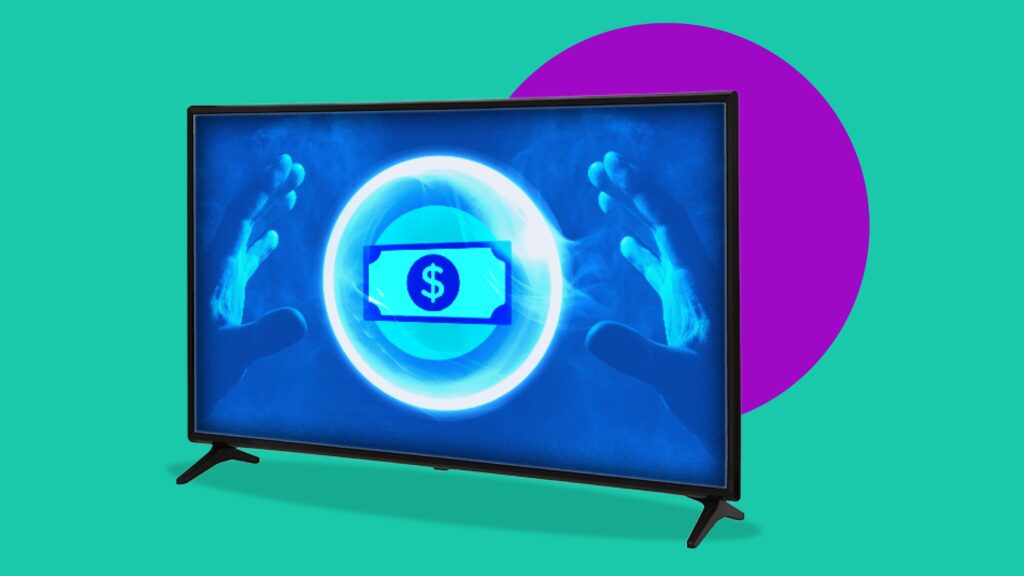From the MNTN Slack: What Netflix’s Q1 Report Signals About the Future of Streaming
by Cat Hausler
8 Min Read
CES 2024: Stagwell (STGW) and MNTN Announce Partnership in Unified Performance SolutionsLearn More
How Streaming’s Next Shakeup is Shaping Up

4 Min Read
Thanks to its digital DNA, Connected TV was built for change — especially as an ad channel. The CTV landscape of today looks dramatically different from just a few years ago, thanks to the number of services, viewers, advertisers, and new capabilities. And that evolution won’t slow down any time soon.
As we approach the end of 2023, we’re starting to get a glimpse of what 2024 holds. From price increases to market consolidation to a greater embracing of ad support from both viewers and services, it’s clear that by this time next year, we’re going to be looking at a very different streaming landscape. Here’s what analysts — and MNTN — predict will be waiting for us.
The American public may be used to inflation driving costs up, but the price of streaming has continually climbed enough to surprise even the most jaded consumer. Last month, Disney+, Hulu, ESPN+, and Netflix all raised their prices (again) — and last week Apple TV+ followed suit with a $3 per month raise. Now over 50% of all major streaming services are charging a monthly fee that’s double the cost of their initial price point — and that includes services that are only 2-3 years old.
What’s waiting in 2024? Analysts predict more price increases — with a catch. “Look at what Netflix continues to do,” Robert Fishman, a MoffettNathanson analyst, recently told Fortune. “I don’t think there will ever necessarily be an endpoint.” Fishman and others point to drivers like a saturated streaming market challenging streamers to continue generating revenue, while media companies look to recoup their losses on dying linear TV channels. The question now is how consumers will react. Already, a growing percentage are dropping their expensive ad-free tier and embracing ad-supported streaming to cut costs.
Interestingly, ad-supported tiers are mostly (if not completely) immune to the constant price hikes — and as consumers put a greater focus on them, streaming services are following suit. “We’re obviously trying, with our pricing strategy, to migrate more subs to the advertiser-supported tier,” Disney CEO Bob Iger recently said on an earnings call. While Disney+ has nearly doubled its launch price to $13.99 a month, its ad-supported tier has remained at the same $7.99 a month cost since its unveiling last year. The gulf between ad-supported and ad-free on Hulu is even larger: $7.99 a month for ads, versus $17.99 a month without.
Unlike paid subscriptions, which bring in a fixed amount of revenue monthly, advertising revenue offers limitless financial growth thanks to the number of ads displayed and the rates a streaming platform can charge. Already streaming services are scrambling to make their platforms more lucrative to advertisers to get a piece of this pie; last month, Disney+ announced new first-party audience targeting capabilities and programmatic buying through private marketplaces that emulate the feature suite of premium CTV platforms like MNTN Performance TV.
With countless streaming services competing for user attention — and endless price increases competing for their wallets — analysts believe that the streaming industry is about to lose some of its biggest services. Netflix spent years pushing through revenue loss as it built up the subscriber and engagement numbers that it has today, and subsequent services are pushing to achieve the same — but in a much more competitive landscape than Netflix faced. In 2024, expect to see some services realize that it is more cost-effective to sell off their content to the highest bidder and let other companies worry about maintaining an expensive streaming service. While this could make it easier to find your favorite content eventually, these shows and movies might be unavailable for a while until they can find a new home — potentially ruffling consumers’ feathers.
We’re already getting a glimpse into next year’s possible consolidation, as Disney finally decided to buy its remaining 33% stake in Hulu for at least $8.61 billion. While Disney previously revealed plans to create a central app that brings in both Hulu and Disney+ content for subscribers of both, all eyes are on what the media giant will decide to do with two competing streaming services — or whether they’ll combine them into one mega-service, as long predicted by industry analysts.
After years of continual market fragmentation and media companies going to great lengths to boost subscriber numbers regardless of the cost, 2024 is going to mark a fascinating maturation for the streaming industry. Between predicted continual price increases, massive consolidation and retirement of services, and new advertising opportunities for brands, next year looks to be another watershed moment for CTV — setting the table for its growth in the second half of the decade.
For more predictions for 2024, check out What Today’s Insights Tell Us About 2024’s Connected TV Trends.
Other CTV News You Need to Know: